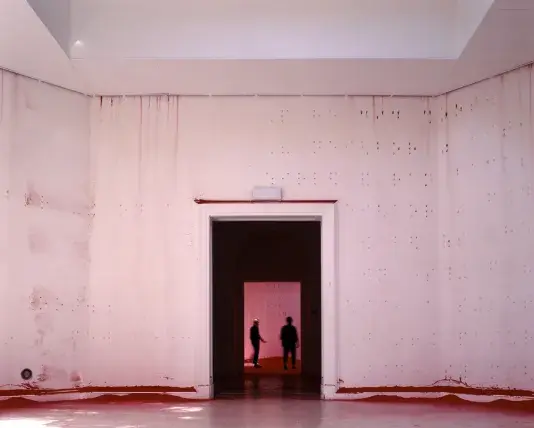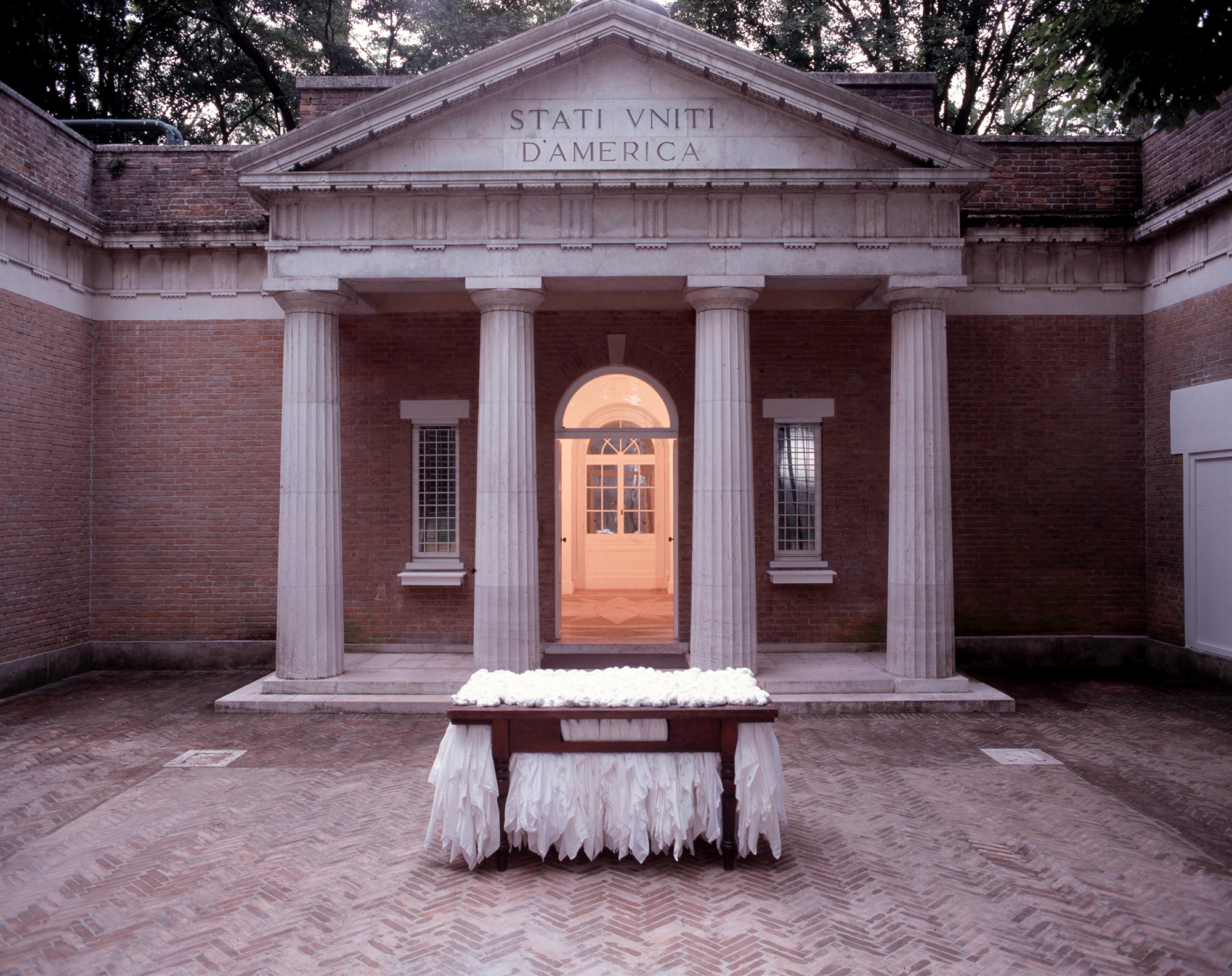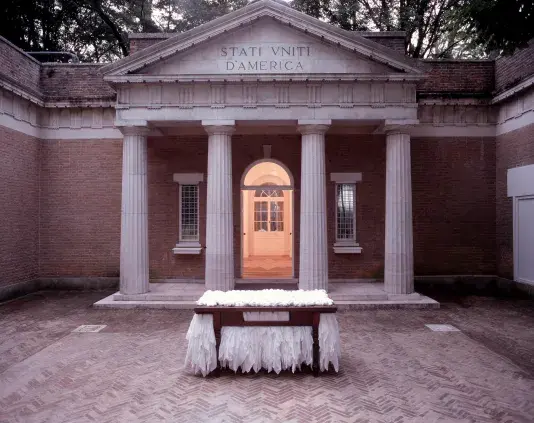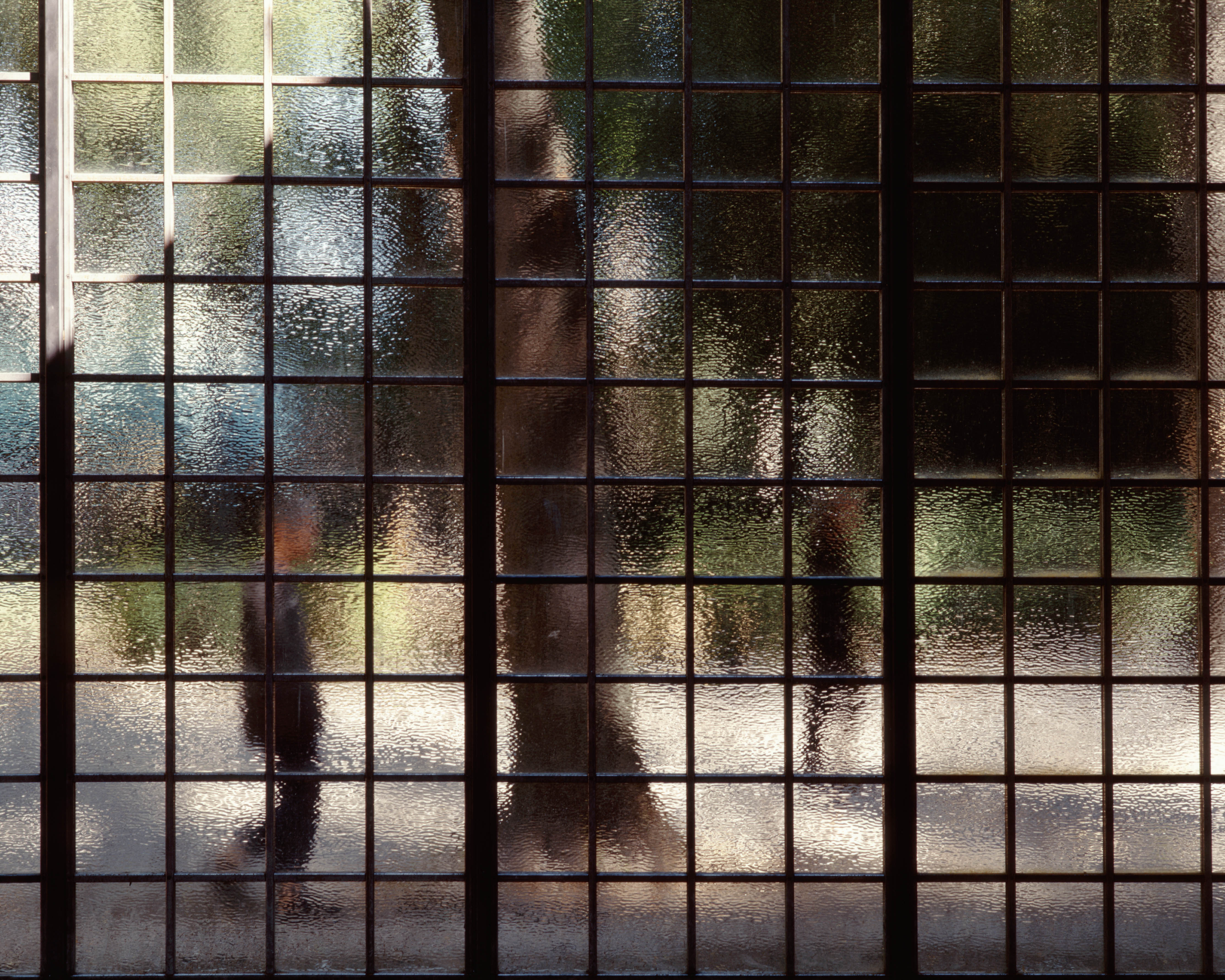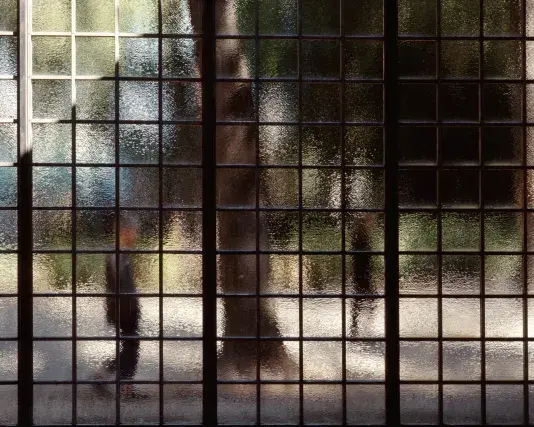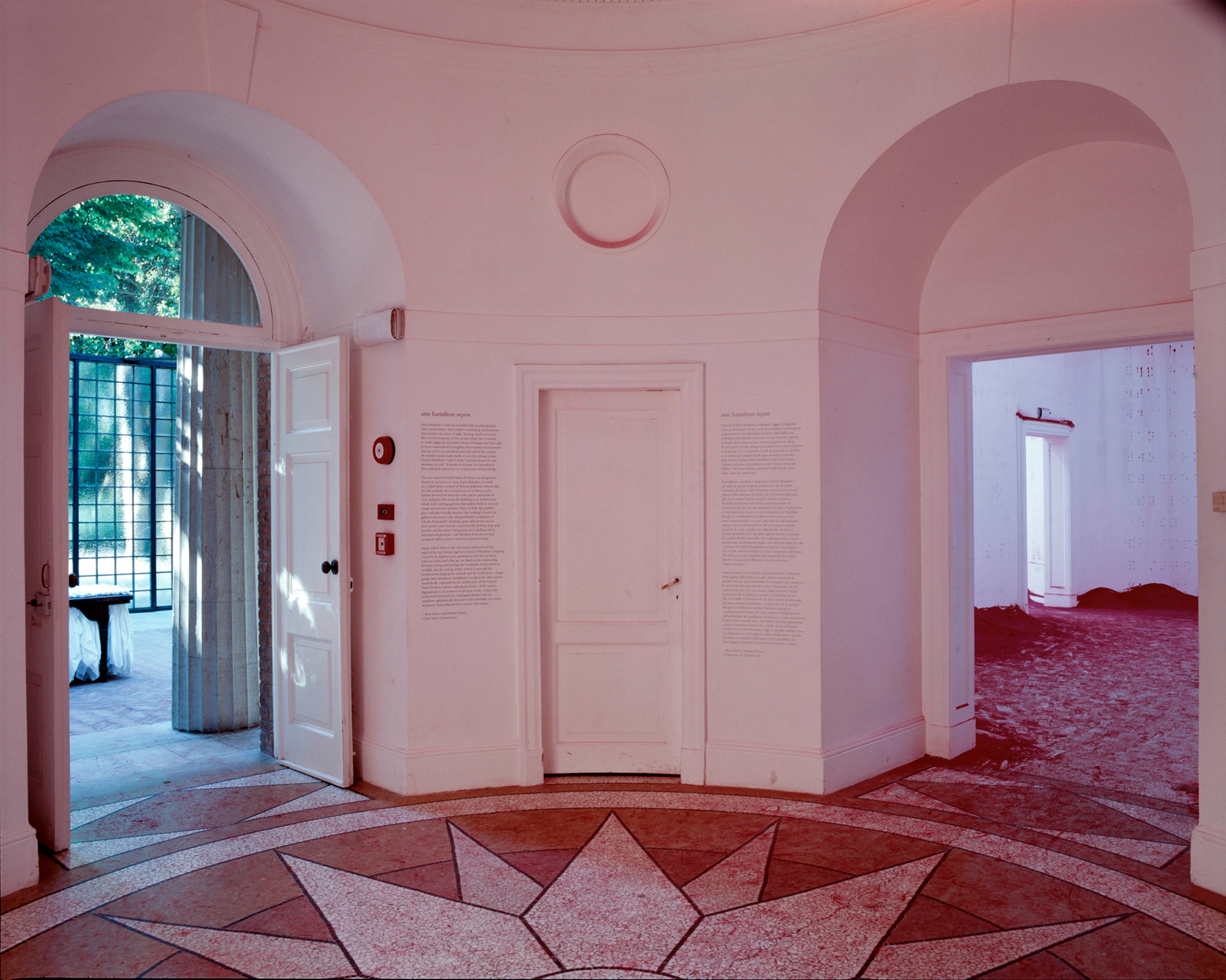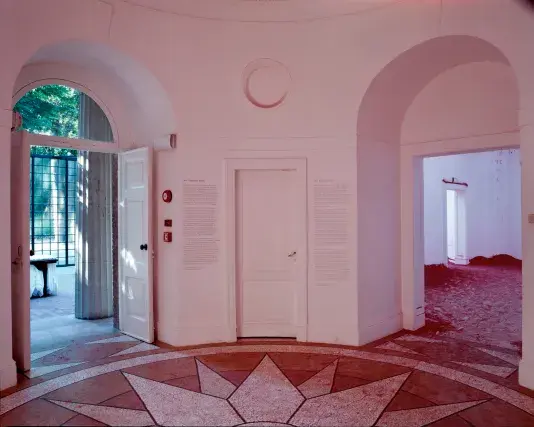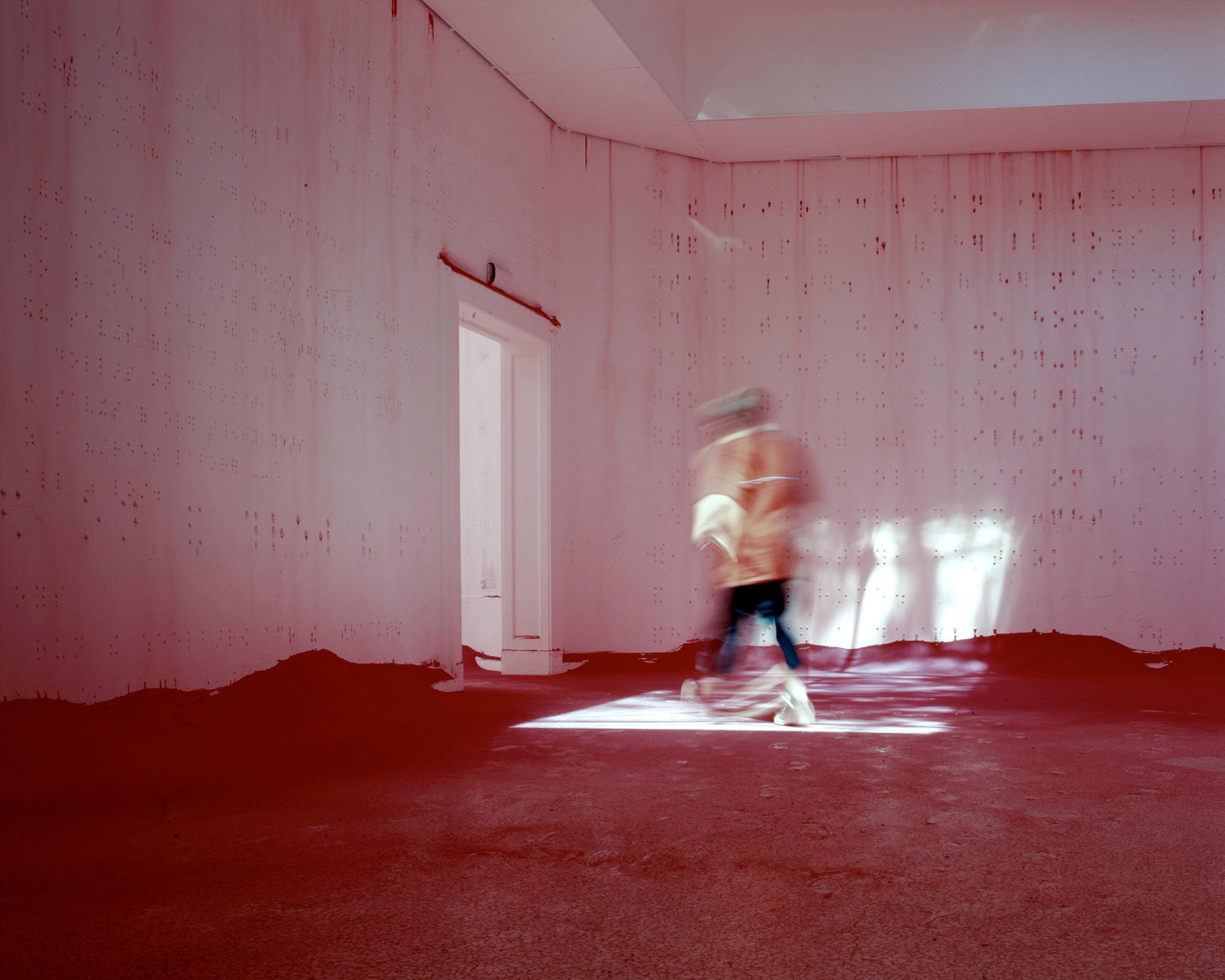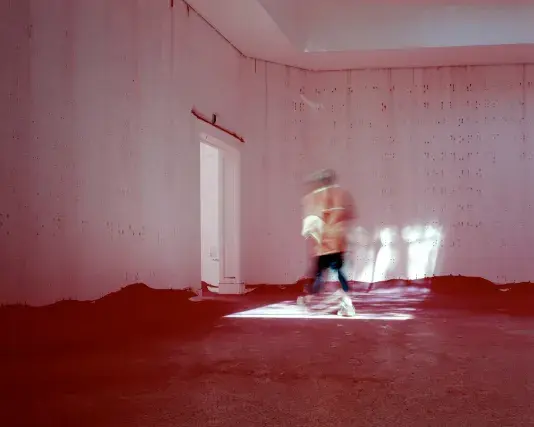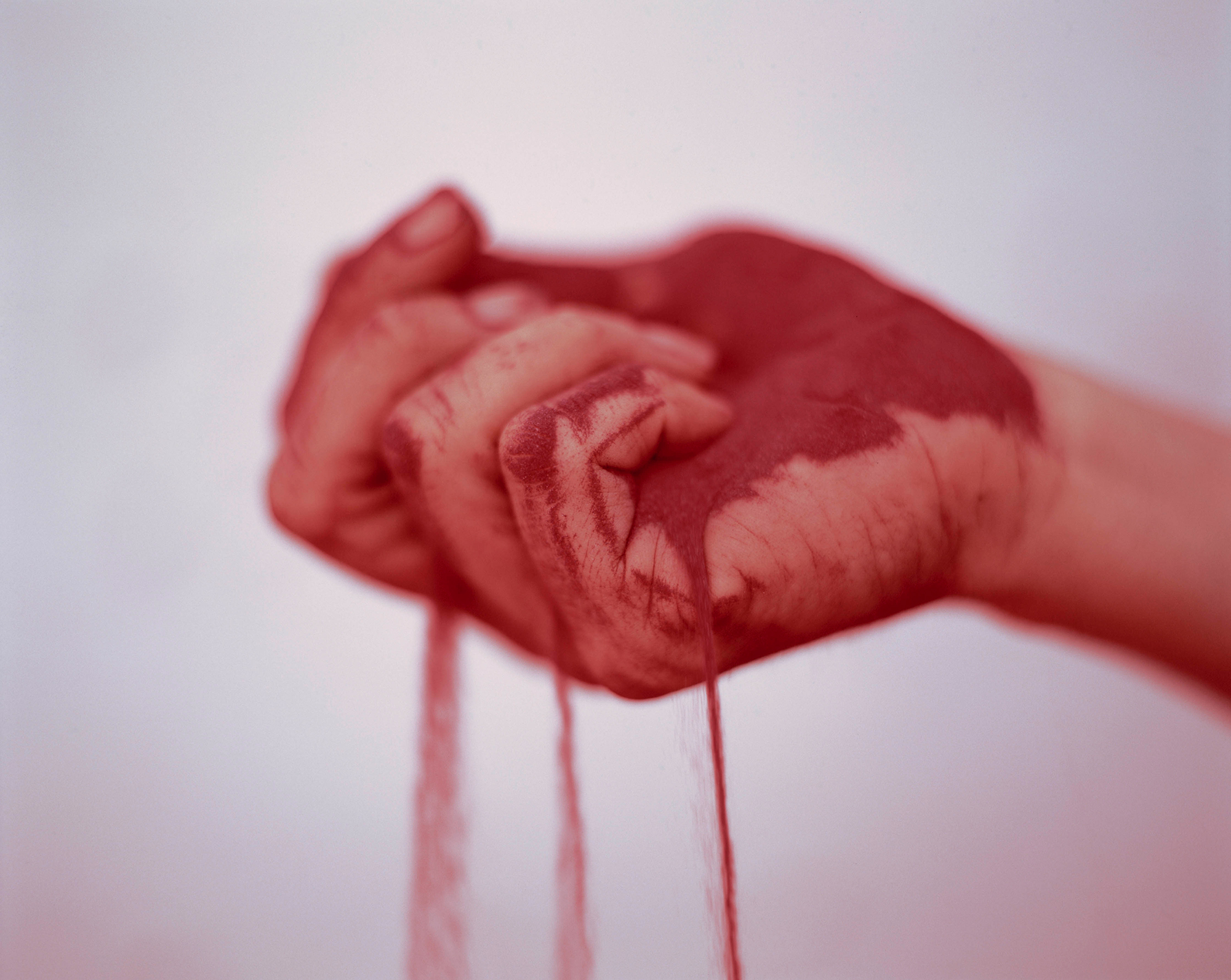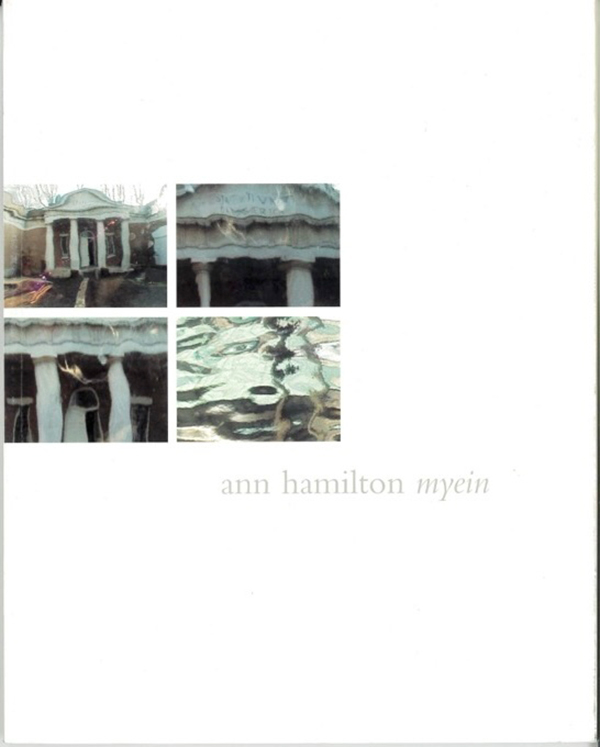myein, The United States Pavilion, 48th Venice Biennale, Venice, Italy. June 13, 1999-November 7, 1999. Photo: Thibault Jeanson
myein
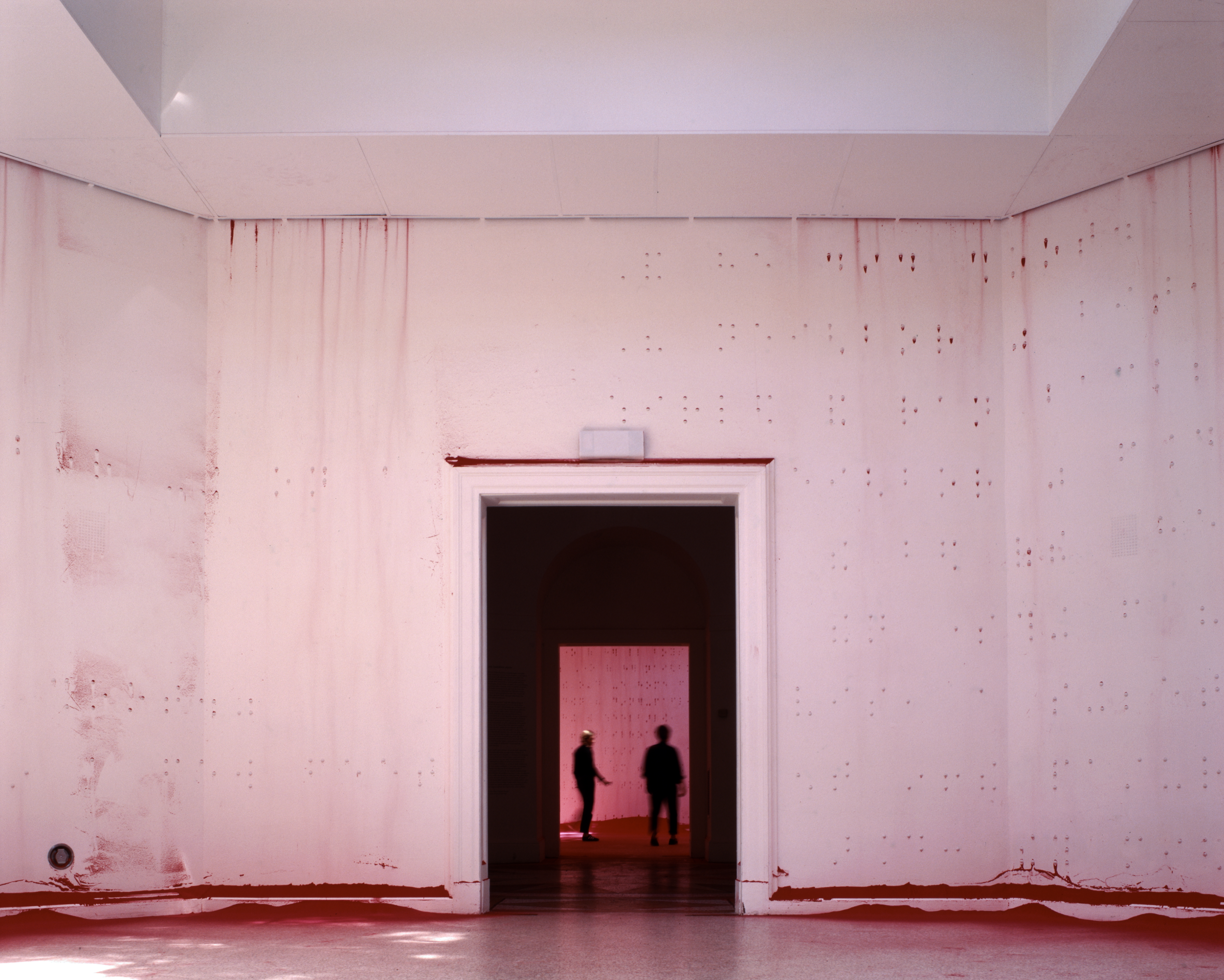
For the US Pavilion of the 48th Venice Biennale, the MIT List Visual Arts Center presented myein by Ann Hamilton.
Known for her large-scale installations that highlight somatic experience and question dominant forms of knowledge, Hamilton has established a multifaceted practice encompassing sculpture, photography, video, performance, and architectural interventions.
myein took the neoclassical architecture of the Pavilion as an entry point to consider America’s history and present-day practices of subjugation and injustice. As visitors approached the Pavilion, they encountered a sixteen-foot-tall steel grid of rippled glass panes. Stretching ninety feet across the entrance, this structure transformed the facade into a series of distorted images and created an interior courtyard in which a wooden table, covered with a knotted cloth, referenced some of the earliest forms of record-keeping. Inside the building, Hamilton removed the preexisting false ceilings to uncover four skylights, flooding the space with natural light. Recordings of a whispering voice played throughout the space, speaking Abraham Lincoln’s Second Inaugural Address in a code wherein each word was spelled out as a name or thing: Alpha for A, Indigo for I, Bravo for B, and so on. On the walls of the four interior galleries, Hamilton plastered braille lettering that spelled out the poet Charles Reznikoff’s "Testimony: The United States 1885–1915"—a piece that transferred statements of witnesses in court cases involving property disputes, accidents, and acts of violence into the form of free verse. A brilliant fuchsia powder fell continuously from the ceiling along the perimeter walls of the four galleries, collecting on the raised braille dots throughout the run of the exhibition.
Across the exhibition’s various components, Hamilton obscured her cited texts (the knots and spoken code too cryptic to be legible and the braille too large to be read) and offered sensory experiences in their stead. The project’s title, myein [μύειν], a Greek verb meaning “to close” (the eyes or mouth) and the root for the word “mystery,” referenced this gesture of obfuscation. The richly ambiguous term points to Hamilton’s central concerns around communication, the sensorium, the invisible, and ways of knowing. By highlighting air, light, and architecture, myein established a complex of conditions meant to engage our active, full-bodied participation—through eye, mind, memory, to the visceral core of our being.
The exhibition was organized by List Center Director Katy Kline and List Center Curator Helaine Posner.
Ann Hamilton (b. 1956, Lima, Ohio, USA) is a visual artist internationally acclaimed for her large-scale multimedia installations, public projects, and performance collaborations. Through her site-responsive process, she works with common materials to invoke particular places, collective voices, and communities of labor. Noted for a dense accumulation of materials, her ephemeral environments create immersive experiences that poetically respond to the architectural presence and social history of their sites.
Among her many honors, Hamilton has been the recipient of the National Medal of the Arts, Heinz Award, MacArthur Fellowship, United States Artists Fellowship, NEA Visual Arts Fellowship, Louis Comfort Tiffany Foundation Award, Skowhegan Medal for Sculpture, and the Guggenheim Memorial Fellowship. She represented the United States in the 1991 São Paulo Biennial, as well as the 1999 Venice Biennale, and has exhibited extensively around the world. Her major commissions include projects for Waterfront Seattle (2024, 2014); Park Avenue Armory, New York (2013); Pulitzer Foundation for the Arts, St. Louis (2010); the Guggenheim Museum, New York (2009); Contemporary Art Museum, Kumamoto, Japan (2006); La Maison Rouge Fondation de Antoine Galbert, Paris, France (2005); Historiska Museet, Stockholm, Sweden (2004); MASS MoCA, North Adams, Massachusetts (2003); Hirshhorn Museum and Sculpture Garden, Washington, DC (2003, 1991); The Wanas Foundation, Knislinge, Sweden (2002); Akira Ikeda Gallery, Taura, Japan (2001); The Musee d’art Contemporain, Lyon, France (1997); Stedelijk Van Abbemuseum, Eindhoven, The Netherlands (1996); The Art Institute of Chicago (1995); The Museum of Modern Art, New York (1994); Tate Gallery, Liverpool (1994); Dia Center for the Arts, New York (1993); and the Museum of Contemporary Art, Los Angeles (1988).
